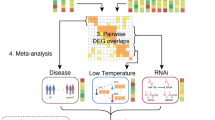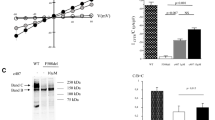Abstract
Few mutations in cis have been annotated for F508del homozygous patients. Southern Italy patients who at a first analysis appeared homozygous for the F508del mutation (n=63) or compound heterozygous for the F508del and another mutation in the cystic fibrosis transmembrane conductance regulator gene (n=155) were searched for the A238V mutation in exon 6. The allelic frequency of the complex allele [A238V;F508del] was 0.04. When the whole data set was used (comprised also of 56 F508del/F508del and 34 F508del/other mutation controls), no differences reached the statistical significance in the clinical parameters, except chloride concentrations which were lower in [A238V;F508del]/other mutation compared with F508del/other mutation (P=0.03). The two study groups presented less complications than the control groups. Within the minimal data set (34 F508del/F508del, 27 F508del/other mutation, 4 [A238V;F508del]/F508del cases and 5 [A238V;F508del]/other mutation cases); that is, presenting all the variables in each patient, forced expiratory volume in 1 s and forced vital capacity presented a trend to lower levels in the study groups in comparison with the F508del/F508del group, and C-reactive protein approximated statistically significant higher levels in the [A238V;F508del]/other mutation as compared with F508del/F508del patients (P=0.09). The analysis of statistical dependence among the variables showed a significant anticorrelation between chloride and body mass index in the [A238V;F508del]/other mutation group. In conclusion, the complex allele [A238V;F508del] seems to be associated with less general complications than in the control groups, on the other hand possibly giving a worse pulmonary phenotype and higher systemic/local inflammatory response. These findings have implications for the correct recruitment and clinical response of F508del patients in the clinical trials testing the new etiological drugs for cystic fibrosis.
Similar content being viewed by others
Log in or create a free account to read this content
Gain free access to this article, as well as selected content from this journal and more on nature.com
or
References
Clain, J., Fritsch, J., Lehmann-Che, J., Bali, M., Arous, N., Goossens, M. et al. Two mild cystic fibrosis-associated mutations result in severe cystic fibrosis when combined in cis and reveal a residue important for cystic fibrosis transmembrane conductance regulator processing and function. J. Biol. Chem. 276, 9045–9049 (2001).
Fanen, P., Clain, J., Labarthe, R., Hulin, P., Girodon, E., Pagesy, P. et al. Structure-function analysis of a double-mutant cystic fibrosis transmembrane conductance regulator protein occurring in disorders related to cystic fibrosis. FEBS Lett. 452, 371–374 (1999).
Polizzi, A., Tesse, R., Santostasi, T., Diana, A., Manca, A., Logrillo, V. P. et al. Genotype-phenotype correlation in cystic fibrosis patients bearing [H939R;H949L] allele. Genet. Mol. Biol. 34, 416–420 (2011).
Amin, R. & Ratjen, F. Emerging drugs for cystic fibrosis. Expert Opin. Emerg. Drugs 19, 143–155 (2014).
Gibson, L. E. & Cooke, R. E. A test for concentration of electrolytes in sweat in cystic fibrosis of the pancreas utilizing pilocarpine by iontophoresis. Pediatrics 23, 545–549 (1959).
Guidelines for the Performance of the Sweat Test for the Investigation of Cystic Fibrosis in the UK (2003). http://www.acb.org.uk. Accessed 26 Jaunary 2016.
Clinical and Laboratory Standards Insitute. CLSI Document C34–A3: Sweat Testing: Sample Collection and Quantitative Analysis; Approved Guideline - Third edition. (CLSI, Wayne, PA, USA, 2009).
Stein, J., Jung, M., Sziegoleit, A., Zeuzem, S., Caspary, W. F. & Lembcke, B. Immunoreactive elastase I: clinical evaluation of a new noninvasive test of pancreatic function. Clin. Chem. 42, 222–226 (1996).
Recommendations of the Clinical Subcommittee of the Medical/Scientific Advisory Committee of the Canadian Cystic Fibrosis Foundation Microbiological processing of respiratory specimens from patients with cystic fibrosis. Can. J. Infect. Dis. 4, 166–169 (1993).
Saiman, L. & Siegel, J. Infection control recommendations for patients with cystic fibrosis: microbiology, important pathogens, and infection control practices to prevent patient-to-patient transmission. Am. J. Infect. Control 31, S1–62 (2003).
Fanen, P., Ghanem, N., Vidaud, M., Besmond, C., Martin, J., Costes, B. et al. Molecular characterization of cystic fibrosis: 16 novel mutations identified by analysis of the whole cystic fibrosis conductance transmembrane regulator (CFTR) coding regions and splice site junctions. Genomics 13, 770–776 (1992).
Eisenberg, D. T., Kuzawa, C. W. & Hayes, M. G. Improving qPCR telomere length assays: controlling for well position effects increases statistical power. Am. J. Hum. Biol. 27, 570–575 (2015).
Morabito, V. Big Data and Analytics: Strategic and Organizational Impact, (Springer International Publishing AG, Cham, Switzerland, 2015).
Lucarelli, M., Narzi, L., Pierandrei, S., Bruno, S. M., Stamato, A., d'Avanzo, M. et al. A new complex allele of the CFTR gene partially explains the variable phenotype of the L997F mutation. Genet. Med. 12, 548–555 (2010).
Pignatti, P. F., Bombieri, C., Marigo, C., Benetazzo, M. & Luisetti, M. Increased incidence of cystic fibrosis gene mutations in adults with disseminated bronchiectasis. Hum. Mol. Genet. 4, 635–639 (1995).
McGinniss, M. J., Chen, C., Redman, J. B., Buller, A., Quan, F., Peng, M. et al. Extensive sequencing of the CFTR gene: lessons learned from the first 157 patient samples. Hum. Genet. 118, 331–338 (2005).
El-Seedy, A., Girodon, E., Norez, C., Pajaud, J., Pasquet, M. C., de Becdelievre, A. et al. CFTR mutation combinations producing frequent complex alleles with different clinical and functional outcomes. Hum. Mutat. 33, 1557–1565 (2012).
Kalin, N., Dork, T. & Tummler, B. A cystic fibrosis allele encoding missense mutations in both nucleotide binding folds of the cystic fibrosis transmembrane conductance regulator. Hum. Mutat. 1, 204–210 (1992).
Wei, L., Vankeerberghen, A., Jaspers, M., Cassiman, J., Nilius, B. & Cuppens, H. Suppressive interactions between mutations located in the two nucleotide binding domains of CFTR. FEBS Lett. 473, 149–153 (2000).
Massie, R. J., Poplawski, N., Wilcken, B., Goldblatt, J., Byrnes, C. & Robertson, C. Intron-8 polythymidine sequence in Australasian individuals with CF mutations R117H and R117C. Eur. Respir. J. 17, 1195–1200 (2001).
Niel, F., Legendre, M., Bienvenu, T., Bieth, E., Lalau, G., Sermet, I. et al. A new large CFTR rearrangement illustrates the importance of searching for complex alleles. Hum. Mutat. 27, 716–717 (2006).
Masvidal, L., Igreja, S., Ramos, M. D., Alvarez, A., de Gracia, J., Ramalho, A. et al. Assessing the residual CFTR gene expression in human nasal epithelium cells bearing CFTR splicing mutations causing cystic fibrosis. Eur. J. Hum. Genet. 22, 784–791 (2014).
Dork, T., Wulbrand, U., Richter, T., Neumann, T., Wolfes, H., Wulf, B. et al. Cystic fibrosis with three mutations in the cystic fibrosis transmembrane conductance regulator gene. Hum. Genet. 87, 441–446 (1991).
Teem, J. L., Berger, H. A., Ostedgaard, L. S., Rich, D. P., Tsui, L. C. & Welsh, M. J. Identification of revertants for the cystic fibrosis delta F508 mutation using STE6-CFTR chimeras in yeast. Cell 73, 335–346 (1993).
Fichou, Y., Genin, E., Le Marechal, C., Audrezet, M. P., Scotet, V. & Ferec, C. Estimating the age of CFTR mutations predominantly found in Brittany (Western France). J. Cyst. Fibros. 7, 168–173 (2008).
Dorfman, R., Nalpathamkalam, T., Taylor, C., Gonska, T., Keenan, K., Yuan, X. W. et al. Do common in silico tools predict the clinical consequences of amino-acid substitutions in the CFTR gene? Clin. Genet. 77, 464–473 (2010).
Sagel, S. D., Wagner, B. D., Anthony, M. M., Emmett, P. & Zemanick, E. T. Sputum biomarkers of inflammation and lung function decline in children with cystic fibrosis. Am. J. Respir. Crit. Care Med. 186, 857–865 (2012).
McKone, E. F., Velentgas, P., Swenson, A. J. & Goss, C. H. Association of sweat chloride concentration at time of diagnosis and CFTR genotype with mortality and cystic fibrosis phenotype. J. Cyst. Fibros. 14, 580–586 (2015).
Boyle, M. P., Bell, S. C., Konstan, M. W., McColley, S. A., Rowe, S. M., Rietschel, E. et al. A CFTR corrector (lumacaftor) and a CFTR potentiator (ivacaftor) for treatment of patients with cystic fibrosis who have a phe508del CFTR mutation: a phase 2 randomised controlled trial. Lancet Respir. Med. 2, 527–538 (2014).
Wainwright, C. E., Elborn, J. S., Ramsey, B. W., Marigowda, G., Huang, X., Cipolli, M. et al. Lumacaftor-Ivacaftor in patients with cystic fibrosis homozygous for Phe508del CFTR. N. Engl. J. Med. 373, 220–231 (2015).
Acknowledgements
This work was funded by the Italian Ministry of Health (Law 548/93).
Author information
Authors and Affiliations
Corresponding author
Ethics declarations
Competing interests
The authors declare no conflict of interest.
Rights and permissions
About this article
Cite this article
Diana, A., Polizzi, A., Santostasi, T. et al. The novel complex allele [A238V;F508del] of the CFTR gene: clinical phenotype and possible implications for cystic fibrosis etiological therapies. J Hum Genet 61, 473–481 (2016). https://doi.org/10.1038/jhg.2016.15
Received:
Revised:
Accepted:
Published:
Issue date:
DOI: https://doi.org/10.1038/jhg.2016.15
This article is cited by
-
High frequency of complex CFTR alleles associated with c.1521_1523delCTT (F508del) in Russian cystic fibrosis patients
BMC Genomics (2022)
-
A commentary on the novel complex allele [A238V;F508del] of the CFTR gene: clinical phenotype and possible implications for cystic fibrosis etiological therapies
Journal of Human Genetics (2016)



